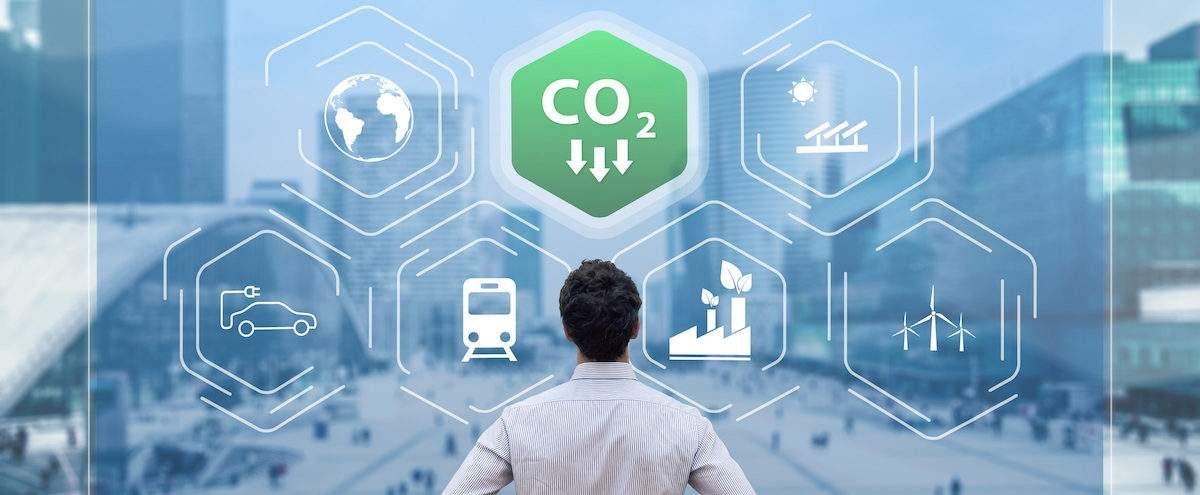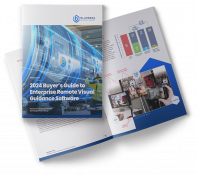Help Lightning Blog
Using Virtual First Service To Reach Carbon Neutral Goals

Virtual first service can help your company reach its carbon neutral goals. It also offers businesses several overhead benefits. These include reduced labor costs, fewer unnecessary orders for wrong parts, increased worker efficiency, and improved customer retention rates. Interestingly, one benefit that often goes overlooked is that of environmental friendliness. And signs from 2021 indicate that this feature may not be considered an afterthought for much longer.
The changing relationship between companies and the environment
Recently, JP Morgan pledged to support climate friendly investments to the tune of $2.5 trillion. All transactions that the bank finances, structures, or in some way facilitates will contribute toward this target. 25% of Fortune 500 companies have made a public commitment to being carbon neutral, using entirely renewable energy, or meeting a Science-Based Target (SBT) for emission reduction. This is all on top of the fact that there’s been a 4x increase in the number of companies with either steps or public commitments to positive climate action.
So big companies care about the environment – or at least, more now than ever before. And the trend seems to be catching. Natural Capital Partners predicts that if growth continues in a similar fashion, by 2030 79% of the Fortune Global 500 could be:
- carbon neutral
- using 100% renewable power
- have met an SBT for internal emissions reductions
What are the driving factors?
Undoubtedly, this move toward sustainability is a welcome shift in the right direction. And it’s driven in part by consumer preferences.
In a recent CGS survey of over 1000 US individuals (aged 18 to 65+), price was unsurprisingly revealed to be the biggest factor in any purchasing decision. However, this doesn’t mean it’s the only consideration. Results indicate buyers want sustainable options, and around 33% are willing to pay 25% more for these options.
Along these lines, when choosing to return to a company or a brand, consumers list a company’s sustainable or ethical business practices as their number two driving force (right behind product or service quality). And “brand name” and “brand mission” rank third and fourth as considerations.
The takeaway from these findings? Whether you’re selling B2B, B2C, or DTC, the general population is becoming increasingly aware of the issue of sustainability. Given the option between providers and relatively equal cost, it appears that sustainability could be a differentiating factor. One that wins more repeat business over a longer period of time.
Can virtual first service help your company reach its carbon neutral goals?
In a nutshell, the answer is yes.
Implementing virtual first service will be particularly beneficial in striving toward carbon neutrality, as this technology will assist in:
Reducing truck dispatches
Think of all the use cases for in-person service calls. From quality assurance inspections, to equipment installation, to fixing utility outages, not only will your business be able to lower the number of second calls your team needs to run out to, but also reduce the number of first-time calls entirely.
Why? Simply put, simple to medium-difficulty problems encountered by customers can be solved over remote AR-powered software, without need for any type of truck dispatch. In fact, remote assist software can improve first time fix rates by 35%. This is thanks to the seamless communication and improved level of understanding this interactive smart software offers boots-on-the-ground workers and customers alike.
Finally, check out the following facts:
- Aberdeen Group finds that 33% of service work orders require a second trip.
- Using remote visual assistance, you can slash 18% of these that are due to lack of experience, 19% caused by limited access to information, and another 28% as a result of wrong diagnoses.
- So, by using remote assist software, you could cut second-time trips by 65%.
- This almost ⅔ reduction could slash your greenhouse gas emissions from truck usage by a significant amount over the course of a year. And don’t forget the saving of money, too.
Here, virtual first is a clear contributor to a carbon neutral strategy.
Eliminating environmentally-damaging errors
Often, someone orders the wrong part for a piece of equipment. Other times, entire service teams are called out to an issue that doesn’t warrant the time, effort, or mileage. Still other times, customers can’t quite get the hang of a complex product. This requires unnecessary sales visits to smooth out miscommunications.
Remote assist software solves for all these issues by allowing specialists to troubleshoot problems they’d usually have to see in-person to figure out. This extra expert insight essentially means fewer wrongly-ordered parts (which cost your company time and money, and the environment the carbon emissions associated with the shipping and delivery of this good).
The result of this technology can be significant on your cost savings, as well as your carbon footprint. For instance, one Help Lightning partner reports “a 50% improvement in our ability to ship the right part the first time” thanks to the interactive, highly visual nature of remote first service technology. In the above case, this error-reducing feature alone means less air, car, and train transport used to move packages from A to B, in addition to happier customers serviced to a high standard.
Interested in learning more about how remote assist software can help your company reach its clean goals? Get in touch to schedule a free demo. Wondering just how easy it is to use remote assistance software? Read about how simply scanning a QR code can initiate a call.













